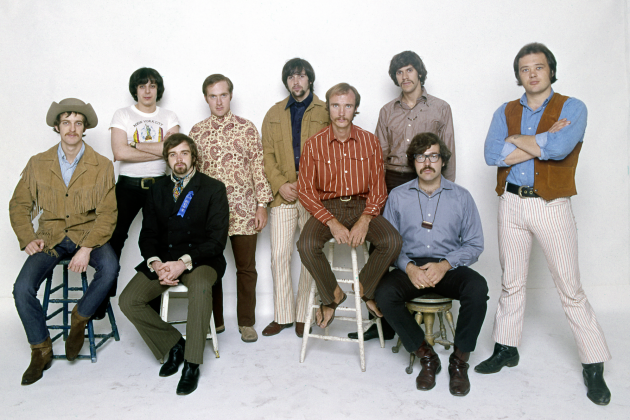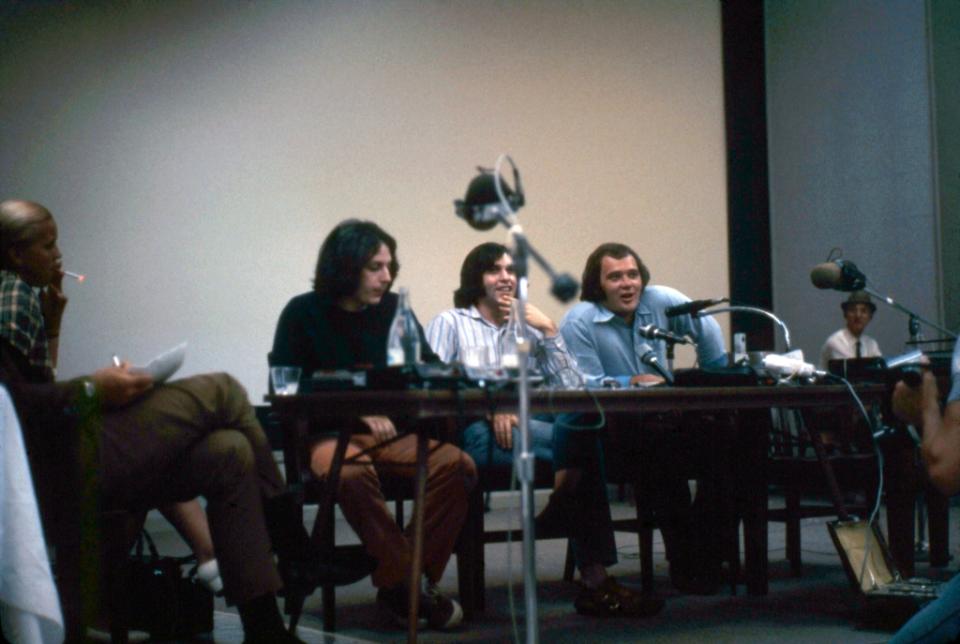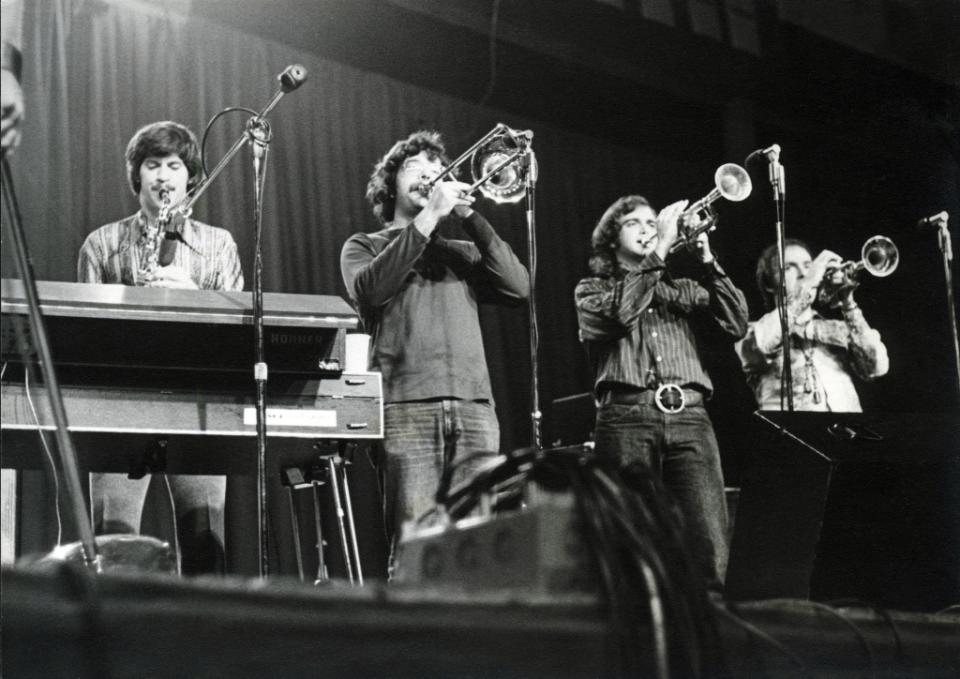‘What the Hell Happened to Blood Sweat & Tears?’ Film Reveals How U.S.-Sponsored Foreign Tour Helped ‘Cancel’ a Top ’70s Band

“What the Hell Happened to Blood Sweat & Tears?” is the question filmmaker John Scheinfeld (“Chasing ‘Trane,” “The U.S. vs. John Lennon”) asked the band’s co-founder and industry acolyte Bobby Colomby over lunch just two months before COVID. The story Colomby told him that day turned into a compelling documentary that serves as the perfect glimpse into the roots of today’s cancel culture in an incident that took place 53 years ago.
It was a reasonable query about a band that, as the summer of 1970 approached, was the hottest entity in rock ‘n’ roll, with a self-titled sophomore album for Columbia Records that topped the chart for seven weeks, spawned three massive Top 5 hit singles (covers of Laura Nyro’s “And When I Die” and Brenda Holloway’s “You’ve Made Me So Very Happy” and the novelty-like “Spinning Wheel,” penned by the band’s newly minted vocalist David Clayton-Thomas), while taking home an album of the year Grammy over “Abbey Road,” “Crosby, Stills & Nash” and “Johnny Cash Live at San Quentin.”
More from Variety
The real-life political thriller Colomby recounted involved the U.S. State Department’s long-running Cultural Presentations Program, which sent American musicians around the world in an attempt to spread its cultural influence and a redeeming message of freedom. Throughout the ’50s, that included mostly classical and jazz artists like Louis Armstrong, Benny Goodman, Duke Ellington and Dizzy Gillespie, but by 1970, it was apparent rock ‘n’ roll music might be the most effective way to grow the hunger for democracy.
The only trouble was, ‘60s rock culture was fueled by a growing sentiment against the Vietnam War and its chief presidential proponents — first Lyndon Johnson, forced out by the protests, then Richard Nixon, who escalated the conflict when he was elected in 1968 despite promises to the contrary. Blood, Sweat & Tears, at the top of the rock pecking order, found themselves in a bind when their lead vocalist, Canadian Clayton-Thomas, was threatened with his green card being taken away because of some trouble with the law, though Colomby insists it was the government taking convenient political action during a time of polarization much like today.
The band’s then-manager Larry Goldblatt, a self-described con man who was jailed for passing bad checks (“which made him perfectly qualified to be a rock manager,” joked Colomby), made a quid pro quo agreement with the U.S. government to send BST on a three-week-long tour behind the Iron Curtain to Yugoslavia, Romania and Poland, all filmed by an independent production company hired by the State Department to document the event. Audience reactions ranged from rapturous (in Zagreb, Romania and Poland) to befuddled (in Sarajevo, where the acoustics in a barn-like field house turned into white noise).
Coming out of the scripted TV world, Scheinfeld recognized a compelling narrative that has reverberations to this day. Upon arriving home to a press conference that turned into a media lynching, the band was pilloried by both the right (who opposed its members’ anti-war counterculture stance) and left (who abhorred their cooperation with the U.S. government). And it didn’t help that the rock critic intelligentsia of the time, represented by an apologetic Rolling Stone reporter David Felton in the present-day, preferred the band’s debut, “Child is Father to the Man,” before cult hero Al Kooper was replaced as lead singer by the “pudgy-faced” Clayton-Thomas. The fact that that debut sold 40,000 and its successor more than 4 million didn’t help the band’s cause.
“These days, you’re usually attacked from one side or the other,” said Scheinfeld, an admitted fan of the band. “That’s what made this story so unique. They did something to save their career – getting Clayton-Thomas his green card – and, ironically, it ended up killing it. It’s a Shakespearian tragedy. In the course of making this film, I learned how great the band was, how influential it still is. It’s the story of a band, through no fault of their own, who find themselves in the middle of this maelstrom, and couldn’t find their way out. It’s a very human tale.”

“The hip gatekeepers thought Blood, Sweat & Tears weren’t cool enough for them,” added Colomby, and it didn’t help when band members testified to the conditions they saw within the countries where they performed. “The Russians are invading countries again, and that’s why we were there back then. Each country had a different level of a foot being held against their heads by the Soviets.”
Indeed, the film footage captured in Romania, where security was using strong-armed tactics and German Shepherd dogs against the enthusiastic crowd, was filed away and forgotten by the State Department, sensitive to Nixon trying to court favor with the totalitarian regime then being headed by Nicolae Ceausescu.
Scheinfeld eventually located the original footage in an MGM film vault in Los Angeles, as well as the masters from the eight-track audio recordings made by the band themselves, given away by a late producer to the Academy of Motion Pictures and Sciences, and pieced together the story. (Read Variety‘s review of the film here.)
Although the band was one of the first signed by Michael Lang and Artie Kornfeld to perform at Woodstock, their manager prevented them from appearing in the film, another bad move. The group also came under heat from the counterculture for something done routinely these days, appearing in Las Vegas. The documentary also captures the band’s homecoming concert at Madison Square Garden later that summer, where Yippie Abbie Hoffman set fire to a pile of horse dung to protest, a scene recreated in the film with a giant turd landing on Bobby Colomby’s drum kit during the show.
Watching the documentary gives new appreciation for how good this band was, as evidenced by the rapturous reaction from the European fans, who testified in the present-day to their belief in the documentary that their mere presence could set off not just a cultural but political revolution, much like the one that failed in Czechoslavakia.
“When we looked out into the audience, it was like there were prison bars in front of us, and as we played, they were disintegrating,” said Colomby. “The audiences were experiencing this feeling of escape, liberation… freedom.”

Steve Katz, the original member of Blues Project who started Blood, Sweat & Tears with his bandmates Al Kooper and Colomby, was an outspoken left-leaning counter-culturalist, so he initially resisted the tour.
“I was the only political person in the band, and I didn’t want to be used by the Nixon administration to represent American youth. I thought it was horrible, I hated it. We should have played hardball with them rather than make that deal right off the bat. So, what if they kicked out our lead singer? We were the most popular band in the world then. I told the State Department they should take the money they were going to pay us and give it to the Black Panthers. That pissed off a lot of people in the government.”
Katz was surprised at the backlash that greeted the band when they arrived home.
“The media put us on the defensive immediately. We just got pounded… We had just finished playing to audiences that enjoyed themselves, so to have that reaction on returning was disheartening.”

What remains, remarkably, withstands the test of time, and proves what a powerhouse musical outfit that iteration of Blood, Sweat & Tears, at the top of their game, was in retrospect, according to Katz.
“David’s singing was incredible, just extraordinary. It proved to be the right decision to make him the lead vocalist. Bobby and I wanted a better singer than Al [Kooper]. We asked him to stay in the band as the leader, arranger and producer, but he didn’t want to.”
There still is a Blood, Sweat & Tears touring these days – Colomby controls the name, and leased it to David Clayton-Thomas in 1977; after his retirement in 2004, is now being used by a new group of musicians, who contributed to his own score for the documentary, one of a pair of releases on Omnivore Recordings, with the other including the live performances.
Maybe even the longtime snub by the Rock and Roll Hall of Fame, where they have never even been included on the ballot, is next.
“From your lips to their ears,” laughed Scheinfeld. “This would be a great time to reassess the band. No band has been as influential in blending genres. I’d love to see them in there.”
“I look at it as a badge of honor not being in,” claimed Colomby. “Musicians will tell you, we raised the bar for added instrumentation and arrangements. Their saying ‘You’re not worthy’ is my way of saying, ‘How would you know?’”

Like Brian Wilson completing “Smile” some 43 years later, the documentary removes some of the band’s psychic chip on its shoulder, one that has been there some 53 years and counting.
Katz, who still tours with a one-person acoustic presentation where he performs his best-known songs and reads from his published memoirs accompanied by a slide show, concluded, “Seeing the film was very emotional for me because I had given up on what I knew to be the truth. John is like an angel to me. He made a miracle. He took this little bit of rock and political history and corrected it. He did the detective work and turned the narrative of that trip around. It makes me proud to know we did a good job. But I still hate the Nixon administration.”
“What the Hell Happened to Blood, Sweat & Tears?” opened March 24 at the Quad Cinema in the Village and hits L.A. this weekend at Laemmle Monica Film Center, including a Q&A with Colomby and Scheinfeld. It also screens at the chain’s North Hollywood, Encino, Claremont and Glendale theaters, among 50 other locations around the country.
Best of Variety
Sign up for Variety’s Newsletter. For the latest news, follow us on Facebook, Twitter, and Instagram.


